Most responsible herpers try to keep locales fairly tight lipped and maybe shared with an inner circle of friends. This differs drastically from the birding culture, but unfortunately there are people who collect animals irresponsibly (I will leave you to decide what "irresponsible" means), destroy habitat, molest the herps more than they should or share the locales with other irresponsible herpers. One location that is pretty much common knowledge is called snake road. Mike Pingelton gave an excellent synopsis to
Herp Nation that I posted earlier, and also wrote a wonderful article for the magazine. He has been visiting the place for more years than I have been alive, and can really teach everyone a thing or two about the area.
I have been lucky enough to visit twice, and I will always have fond memories. I can't say I am dying to go back anytime soon, but it is a wonderful place to see, enjoy with the company of others and help budding young herpers get a taste for the hobby. I will recall my last visit to the area, back in the fall of 2006.
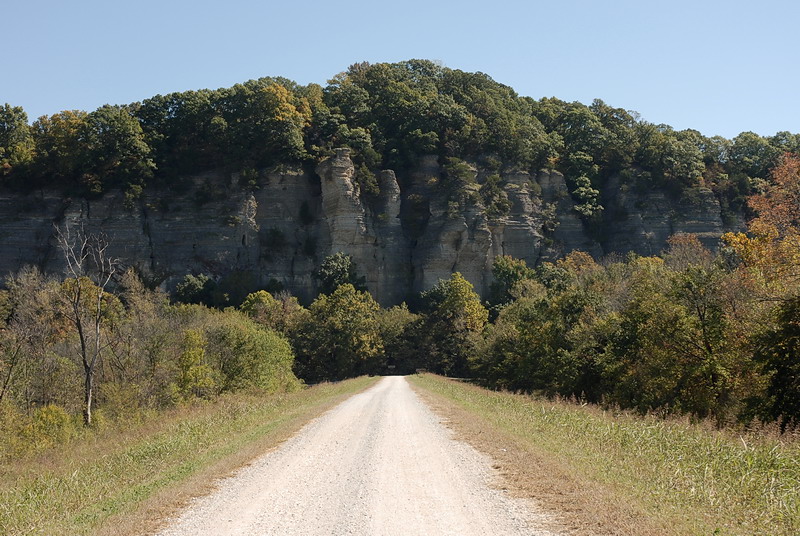 |
| The drive in to the north end of the road. |
|
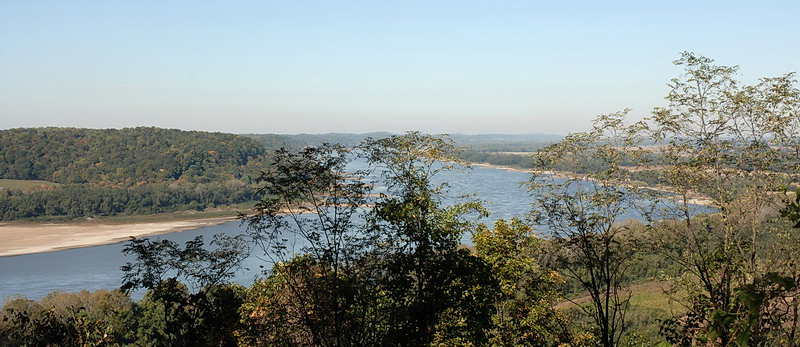 |
| The great Mississippi River. |
|
|
 |
| The northern entrance. The road gets closed every year during the spring and fall for migrations. |
I made the trip from my place in Cincinnati with a close friend, D. We drove down after work on Fri and the 6 hour drive went quickly with anticipation of finds to come. We woke up early and set out with a few people to try and observe a neat amphibian we had not seen before.
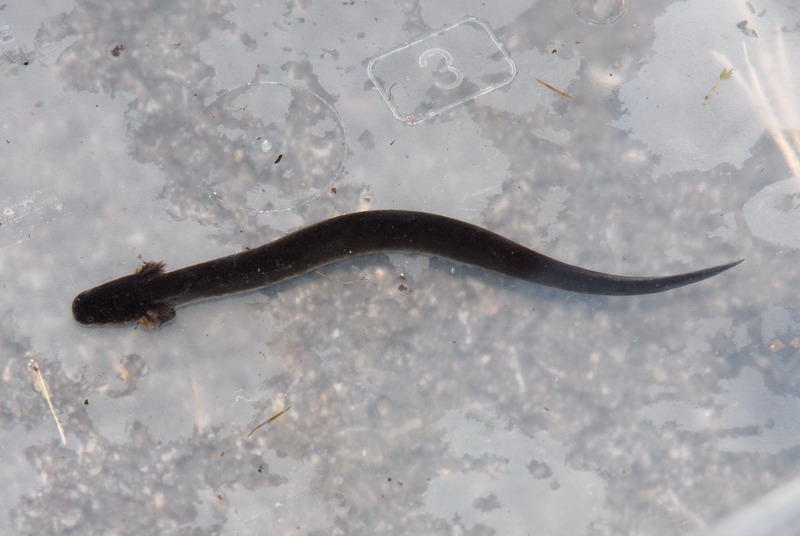 |
| Lesser Siren Siren intermedia | |
It was still cool and early on the road, so we scouted some other areas looking for warm rocks. We found a timber rattlesnake shed, and D found a couple of these mild snakes.
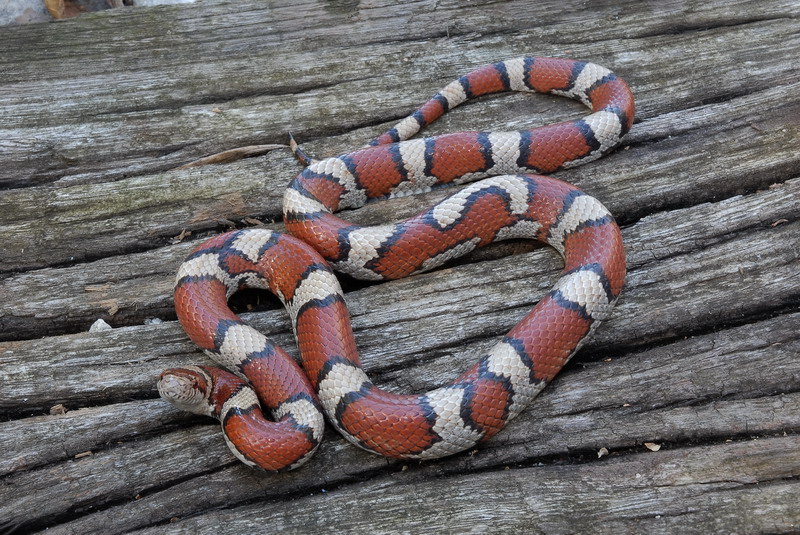 |
| Lampropeltis triangulum |
On the road, we quickly began to find the western cottomouth abundantly around the trail and bluffs.
Unfortunately, a hidden snake such as this managed to bite D and we spent the rest of the day in the hospital. His trip to Snake Road sadly ended here, and I was solo for the rest of the trip. D did well, despite a few days in the hospital , but that is a story for another time.
The next day I walked the road and bluffs numerous times from early morning to late evening. Cottons were again plentiful.
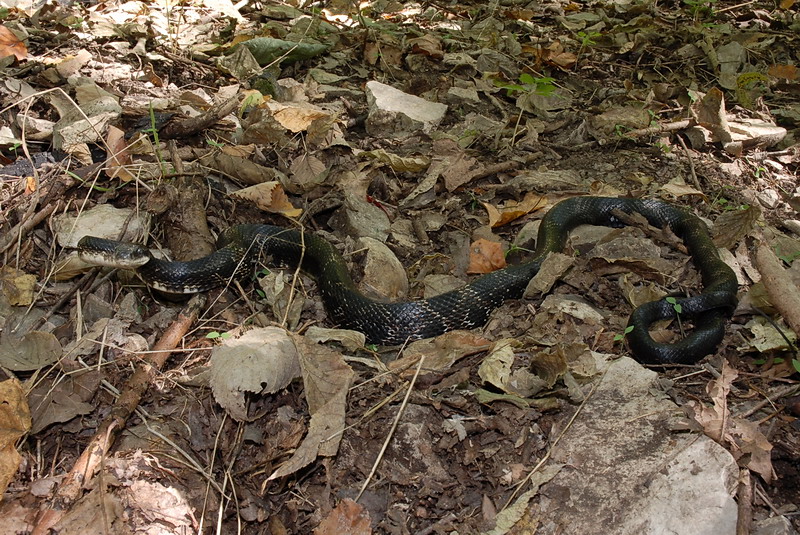 |
| A nice sized rat snake. |
|
|
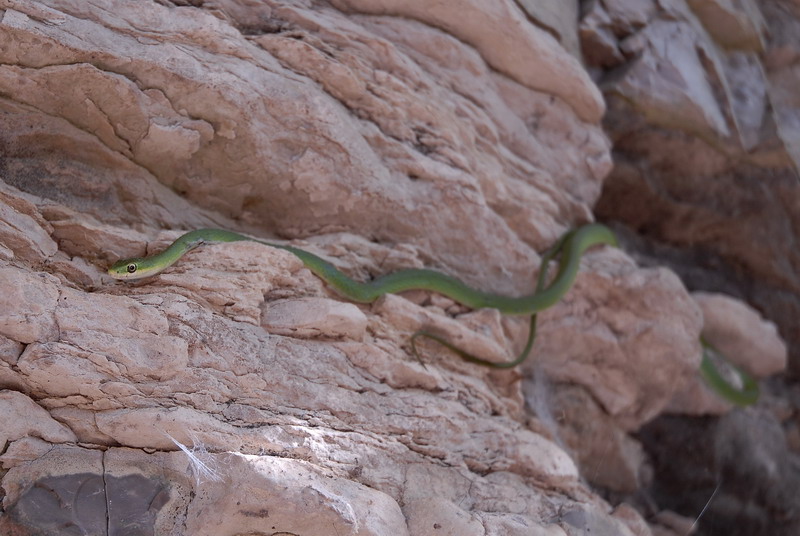 |
| A few rough greens turned up. |
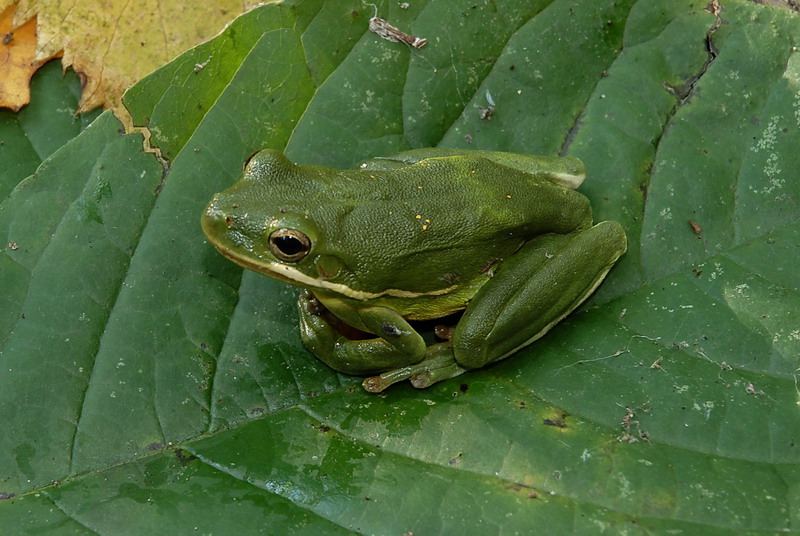 | |
| And a green tree frog in the northern reaches of its range. |
|
In the end, it was a memorable trip full of ups and downs. The road itself is a naturalist's dream and has some wonderful creatures. We both learned some invaluable lessons though. This trip was instrumental in me evaluating how I conduct myself in the field, and I am care to always stay aware of my surroundings now.
BH









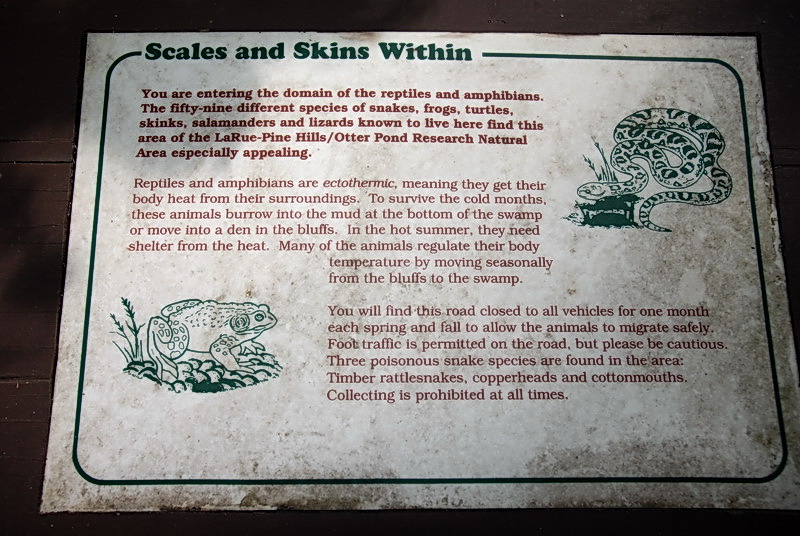

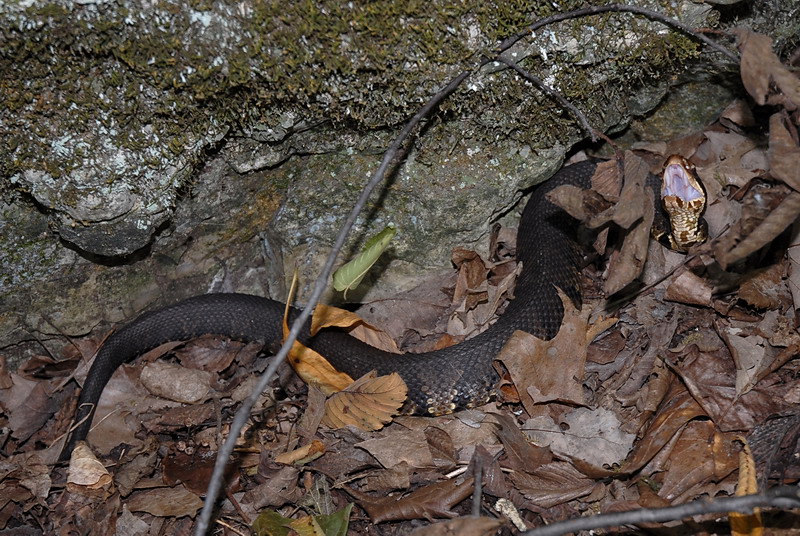
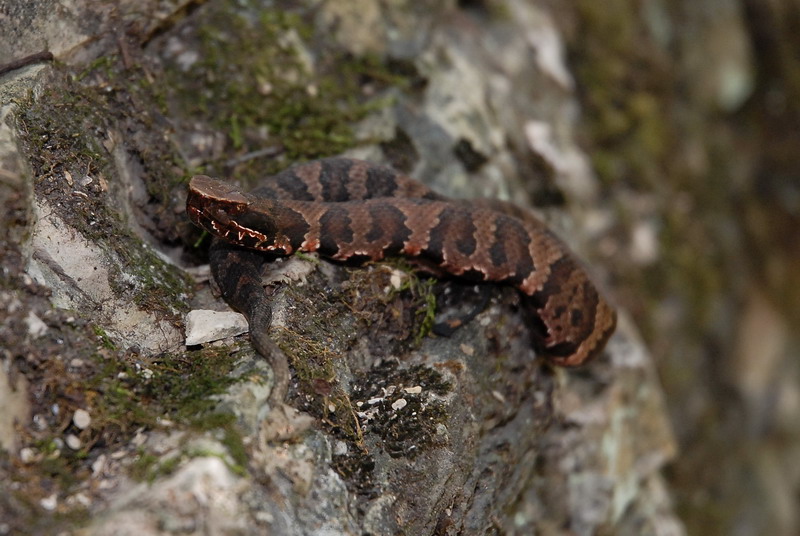
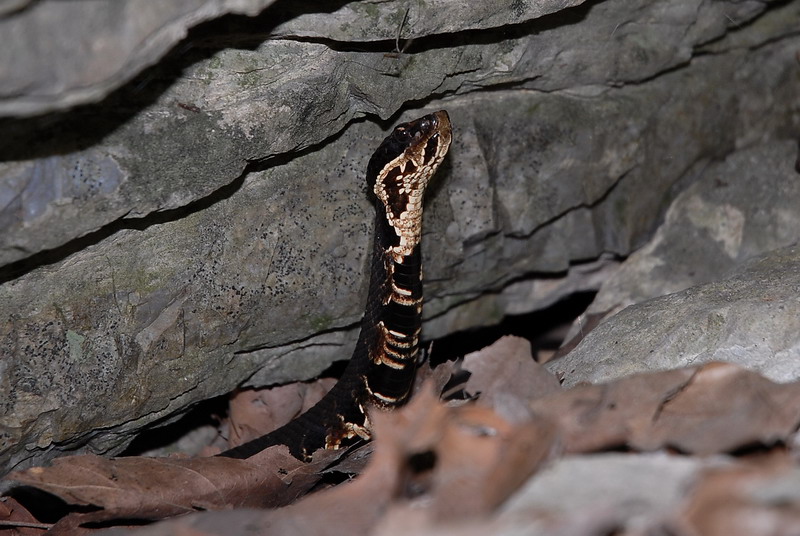

I live real close and didn't know about this place. I'll definitely look it up in the spring.
ReplyDeleteI'm an entomologist, so while I've always enjoyed herp encounters I haven't really looked for them until very recently (after getting interested in photography). I've seen cottonmouths in southeast Missouri, but I'd love to go here and get some photographs. Of the five venomous snake species we have here in Missouri, this and the massasagua are the two that I still haven't photographed yet.
How did D manage to get bitten by one of these? Does one have to be careful photographing them (i.e., more so than any other venomous snakes)?
D was bitten by the snake we did not see. You don't need to really be more careful than other places, you just need to maintain your situational awareness. If you stay on the road you are still likely to see animals and they are much easier to avoid or keep a healthy and safe distance.
ReplyDeleteSo, how do you find this location?
ReplyDeleteIt is a very well known and easily accessible location. Just search for "snake road illinois" and you can read tons of other articles and descriptions. Specifically, it is actually part of the Larue-Pine Hills Ecological Area in southern Illinois.
ReplyDelete